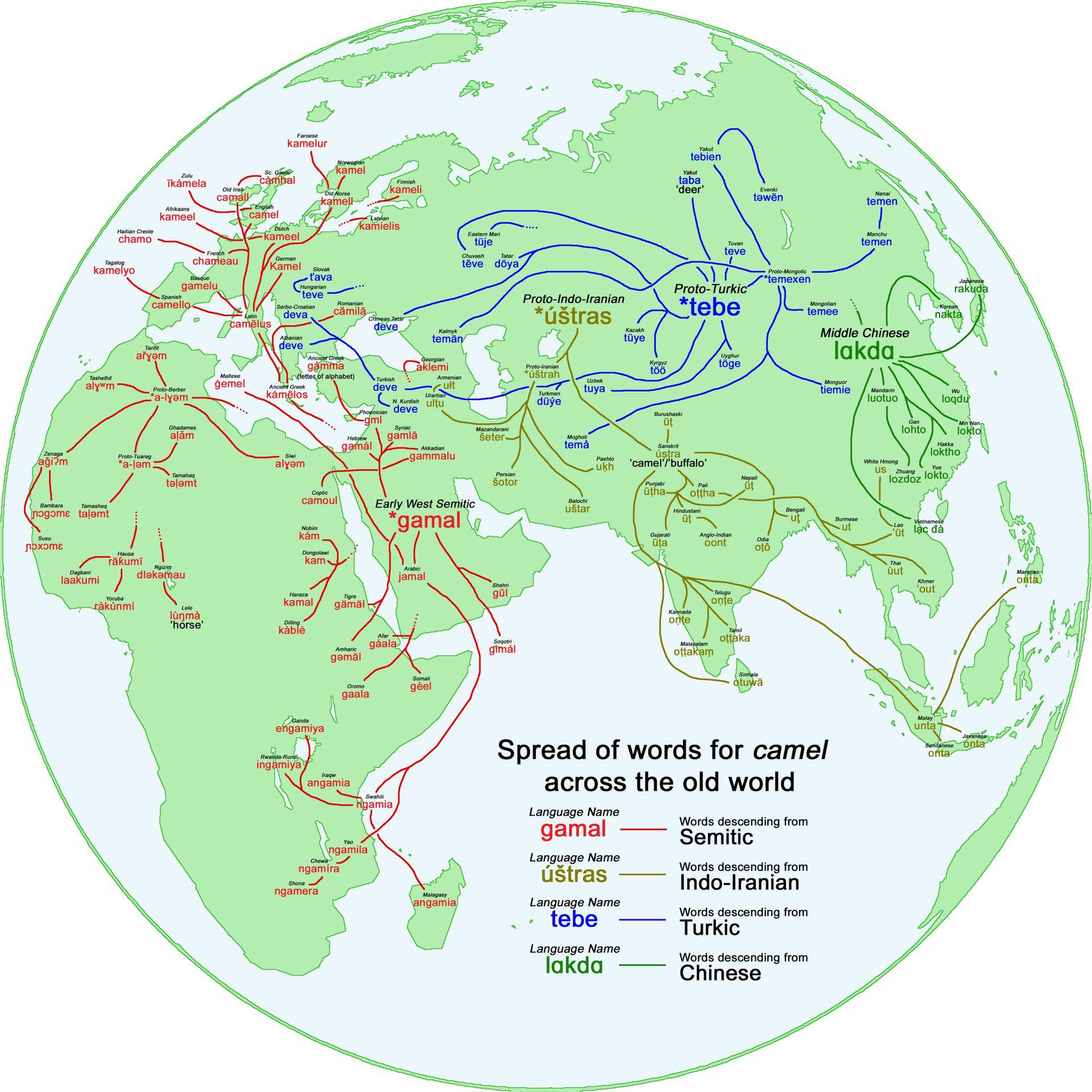Language Distribution Map for the Word Camel


David Chen
Data Visualization Specialist
David Chen is an expert in transforming complex geographic datasets into compelling visual narratives. He combines his background in computer science ...
Geographic Analysis
What This Map Shows
The visualization titled "Spread of the Word for Camel" provides a fascinating insight into how various languages express the concept of "camel." It highlights the linguistic diversity surrounding this domesticated animal, which has been vital to human societies, particularly in arid regions. As you observe the map, it becomes clear that the term for camel varies significantly across different linguistic groups, showcasing how cultural and environmental contexts influence language evolution.
Deep Dive into the Linguistic Landscape of 'Camel'
The camel, often referred to as the "ship of the desert," holds immense significance in many cultures, particularly in the Middle East and North Africa. Interestingly, the word for camel is derived from Semitic roots, reflecting the animal's prominence in ancient trade routes like the Silk Road. In Arabic, for example, the word "جمل" (jamal) is commonly used. This term not only identifies the animal but is also woven into the cultural fabric of societies that depend on camels for transportation and sustenance.
Throughout various languages, the term for camel showcases remarkable variations. For instance, in Turkish, the word is "deve," while in Persian, it is "جمل" (jumal), closely aligning with the Arabic term. This commonality among Semitic and Turkic languages illustrates historical interactions and exchanges between these cultures.
However, as we move further north and east into Slavic languages, the map curiously lacks representation. It’s intriguing to consider why Slavic languages, which have their own rich histories, do not incorporate a distinct word for camel as prominently. This absence might reflect the geographical realities where camels are less relevant or utilized, leading to different lexical priorities.
The significance of the camel in various cultures cannot be overstated. For many nomadic tribes, camels are more than just animals; they represent a livelihood, a source of transportation, and a symbol of wealth. The way different languages encapsulate this animal's essence provides insights into the lifestyle and environment of the speakers. Have you ever wondered how a culture's relationship with a particular animal influences their language?
Regional Analysis
Breaking down the map by regions reveals stark contrasts in language and culture. In the Middle East, where camels are integral, languages like Arabic and Persian dominate the lexicon around this animal. The extensive use of the word across various dialects underlines the animal's importance in commerce, transport, and even poetry.
In contrast, regions such as Eastern Europe, represented by the absence of distinct terms in Slavic languages, highlight a different relationship with the environment. The cooler climates and distinct agricultural practices in these areas have led to different livestock, such as horses and cattle, taking precedence over camels. Interestingly, the cultural focus shifts from camels to these other animals, which are better suited to the regional landscape.
For instance, in Russia, horses have historically been the primary means of transport, shaping the language and cultural expressions surrounding them. This divergence showcases how geography and environment influence language, resulting in unique regional characteristics.
Significance and Impact
Understanding the distribution of the word for camel across languages is more than just a linguistic curiosity; it sheds light on cultural interactions and historical trade routes. As globalization continues to shape our world, the preservation of these linguistic distinctions becomes increasingly vital. Current trends indicate a growing interest in linguistic anthropology, emphasizing the need to study how language reflects cultural identity.
Moreover, with climate change and shifting agricultural practices, the significance of camels might evolve, leading to changes in how languages adapt. The camel's role in transportation and agriculture may grow again in regions facing water scarcity, prompting new linguistic developments. As societies adapt to these changes, we might witness the emergence of new terms or adaptations of existing words.
In summary, the spread of the word for camel is a rich tapestry of linguistic heritage that offers a glimpse into how language evolves with culture and environment. As we continue to explore these connections, we deepen our understanding of human societies and their histories, one word at a time.
Visualization Details
- Published
- October 10, 2025
- Views
- 2
Comments
Loading comments...